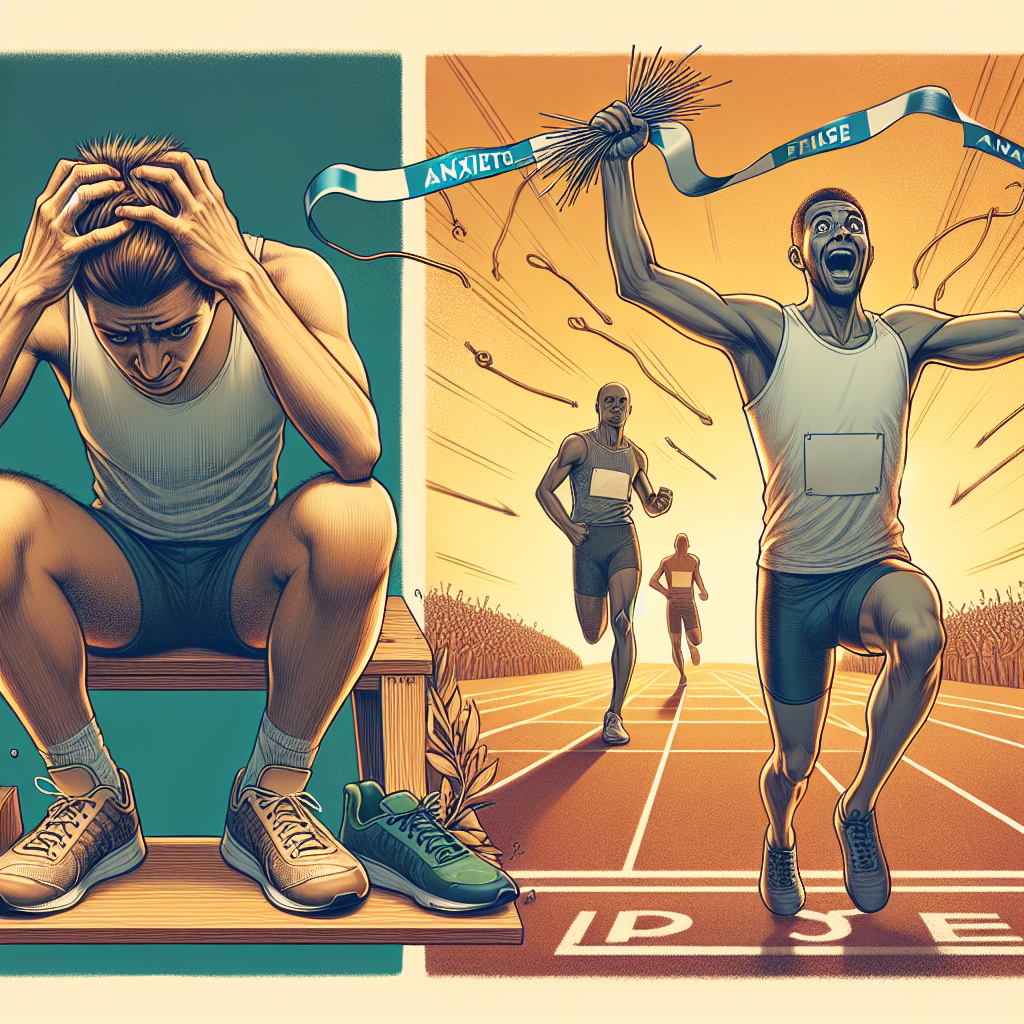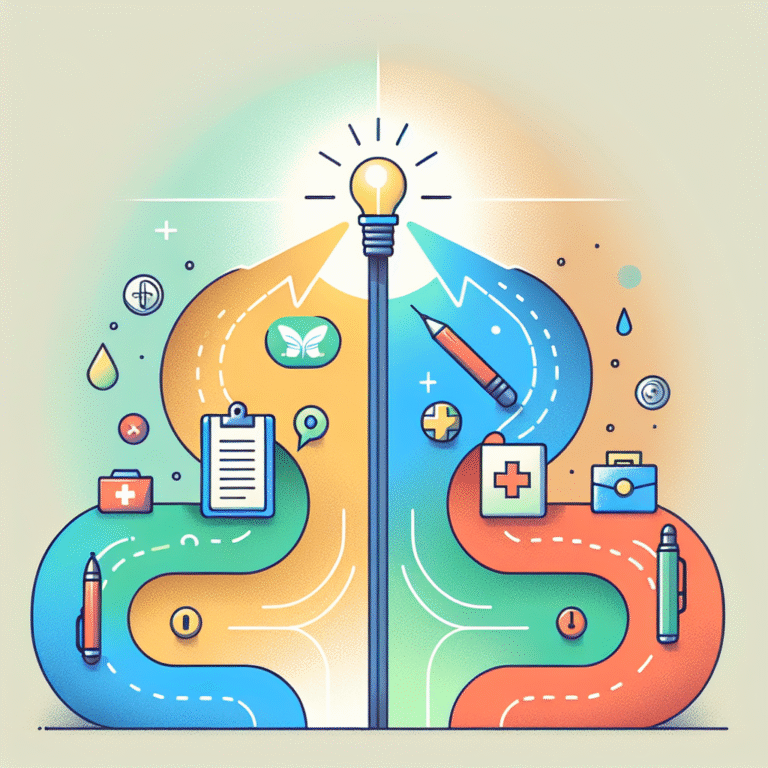
Introduction
Imagine standing at the starting line, heart racing, palms sweating, and a tidal wave of doubt crashing against your confidence. If you’ve ever felt this way in the lead-up to a competition, you’re not alone. For many athletes, facing mental barriers can feel like an unyielding opponent. Yet, the journey from anxiety to advantage isn’t just a catchy phrase; it’s a transformative process that can redefine your approach to competitive sports.
Anxiety has a way of haunting even the most skilled athletes, but what if that same energy could be harnessed into a powerful tool? In this article, we will explore how to turn those moments of uncertainty into a driving force, ultimately leading to peak performance. Through case studies, actionable strategies, and psychological insights, we’ll delve into the layers of anxiety and uncover how to emerge victorious.
Understanding Anxiety in Competitive Sports
The Nature of Competitive Anxiety
Competitive anxiety is a multi-faceted phenomenon that can manifest in a variety of ways. For some athletes, it may surface as performance anxiety, while for others, it might present as excessive worry or self-doubt. Understanding these manifestations is the first step in overcoming mental barriers in competitive sports.
Symptoms of Competitive Anxiety
Some common symptoms include:
- Increased heart rate
- Sleepless nights leading up to the event
- Negative self-talk
- Physical symptoms such as nausea or trembling
These symptoms can severely impact performance, leading to a cycle of stress and underachievement.
Case Study: The Mind of an Olympian
To illustrate the nuances of competitive anxiety, let’s take a closer look at the journey of an Olympic athlete, Michael Phelps. Known as the most decorated Olympian of all time, Phelps has been open about his struggles with anxiety.
Analysis of Phelps’ Journey
Despite his incredible talent, Phelps experienced severe anxiety that almost led him to withdraw from competitions. His breakthrough moment came when he began working closely with sports psychologists. Through techniques like visualization and mindfulness, Phelps transformed his anxiety from a crippling force into a mental asset, using his nerves to maintain focus and motivation during events.
Strategies for Transforming Anxiety into Advantage
1. Mindfulness and Meditation
What It Is: Mindfulness and meditation involve focusing on the present moment and acknowledging thoughts without judgment.
Why It Works: Research shows that mindfulness can reduce levels of cortisol, the stress hormone. This practice allows athletes to understand their anxiety without becoming overwhelmed by it.
How to Implement:
- Daily Practice: Start with just five minutes a day and gradually increase.
- Guided Sessions: Use apps or online videos to lead your meditation.
2. Visualization Techniques
What It Is: Visualization is the practice of imagining a successful performance in your mind’s eye.
Why It Works: Studies have shown that visualization can enhance brain activity in areas related to performance, acting as a rehearsal for actual competition.
How to Implement:
- Create a Routine: Visualize not just winning but also specific skills you’ll perform during the event.
- Incorporate Senses: Engage all five senses in your visualization practice to make the experience more vivid.
3. Building a Support Network
What It Is: A support network consists of coaches, teammates, and mental health professionals.
Why It Works: Having a strong support system can provide reassurance, constructive feedback, and motivation.
How to Implement:
- Regular Check-ins: Schedule time to discuss fears and challenges with your team or coach.
- Mentorship: Seek guidance from seasoned athletes who have overcome similar barriers.
Case Study: Overcoming Adversity in Team Sports
Consider the example of the U.S. Women’s Soccer Team during the 2011 FIFA World Cup. The team faced immense pressure but used anxiety to fuel their performance.
Analysis of the Team’s Success
After a stunning loss in a previous championship, the team acknowledged their collective anxiety and decided to embrace it rather than avoid it. They developed strategies around visualization and group mindfulness sessions, which fostered a supportive environment where athletes could share their feelings openly. The result was an empowered team that played with extraordinary resilience and ultimately claimed the World Cup title.
The Role of Positive Self-Talk
Importance of Constructive Self-Talk
Positive self-talk can alter an athlete’s mindset from one of apprehension to one of determination. Simple affirmations can replace negative thoughts, helping athletes to focus on their strengths and capabilities.
How to Implement:
- Develop Affirmations: Create a set of concise affirmations that resonate personally.
- Practice Daily: Repeat them during training or when you start to feel anxious.
When Anxiety Works in Your Favor: Choke vs. Flow State
Understanding Choking Under Pressure
Many athletes have experienced "choking," where overwhelming anxiety leads to disastrous performance. Recognizing this state is crucial for steering performance back on track.
Flow State: On the opposite end lies the flow state, characterized by peak productivity and focus, bringing joy and satisfaction.
Differentiating Factors
The key differentiator between choking and achieving flow is often mindset and emotional control. Athletes can learn to channel anxiety into excitement, using that energy to drive their performance.
Conclusion
Transitioning from anxiety to advantage in competitive sports is not merely a desirable skill; it’s an essential one. Facing mental barriers with the right tools can empower athletes to redefine their relationship with anxiety and use it to enhance their performance.
Through mindfulness, visualization, support systems, and positive self-talk, athletes can create an environment where potential flourishes. In this journey, remember the core message: anxiety, when understood and managed, can become an ally rather than an enemy.
Actionable Takeaway
The next time you feel the rising tide of anxiety before a competition, pause and remember the athletes who transformed their fears into triumphs. Use their stories as motivation, implement the techniques discussed here, and watch your own anxieties morph into incredible advantages on the competitive field.
FAQs
Q1: How can I tell if my anxiety is affecting my performance?
A: Signs may include physical symptoms (like a racing heart), negative self-talk, and trouble concentrating. Recognizing these early will help you address them.
Q2: What is the first step to managing competitive anxiety?
A: Start by acknowledging your feelings. Keep a journal to track your thoughts, which helps in categorizing and addressing them constructively.
Q3: Is it too late to change my mindset before an important competition?
A: No, it’s never too late. Implementing mindfulness and visualization techniques can yield immediate benefits.
Q4: How can I support a teammate struggling with anxiety?
A: Offer an open ear and encourage them to discuss their feelings. Be supportive, share techniques that have helped you, and remind them they’re not alone.
Q5: Can sports psychologists really help?
A: Absolutely. Sports psychologists specialize in these issues and can provide personalized strategies to help turn anxiety into a competitive advantage.
In a world where competition often breeds anxiety, transforming mental barriers into stepping stones can redefine success. With the insights shared in this article, every athlete has the potential to experience the exhilarating transition from anxiety to advantage. Embrace the journey, harness your fears, and elevate your game.














